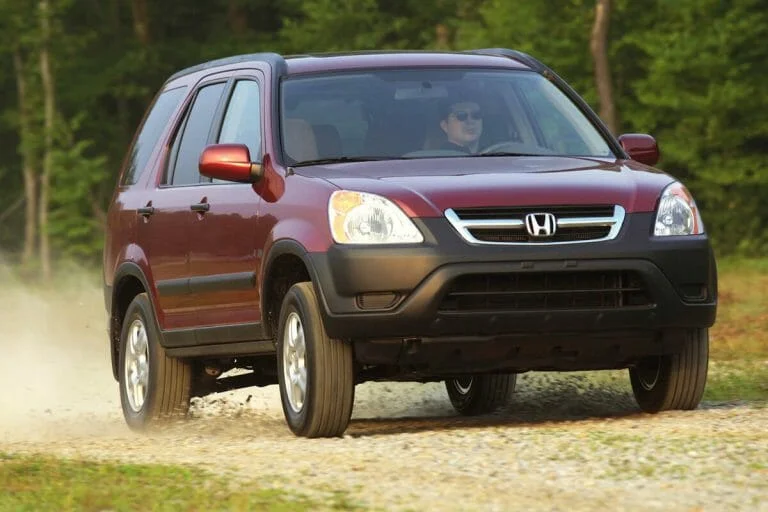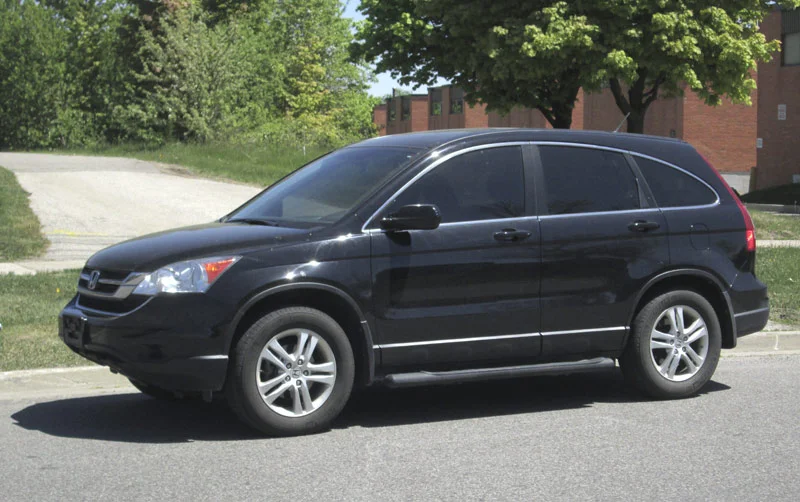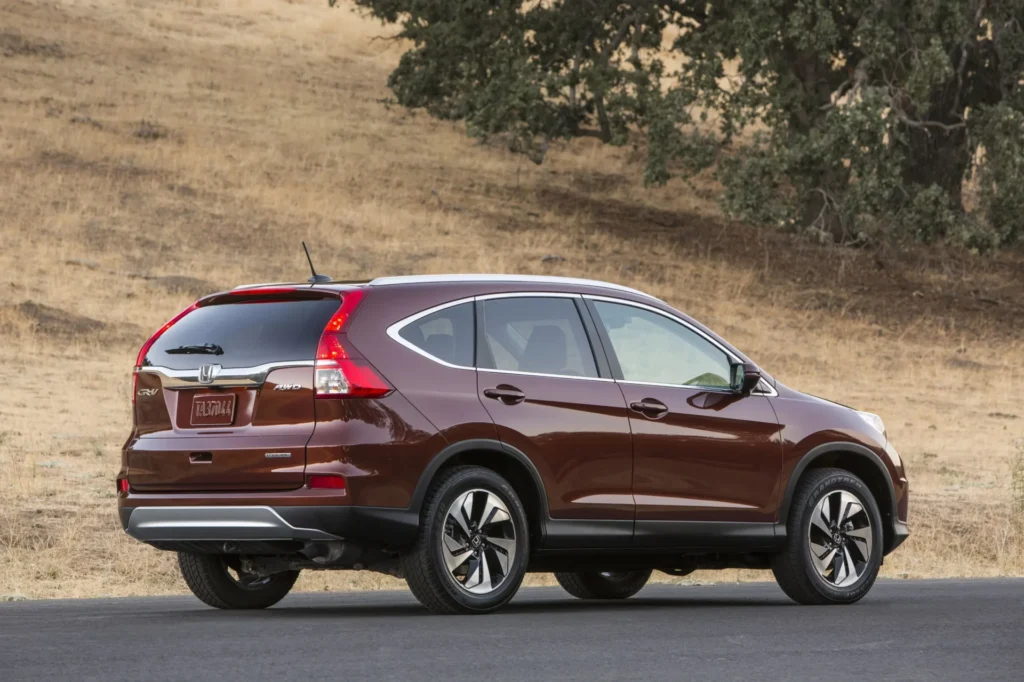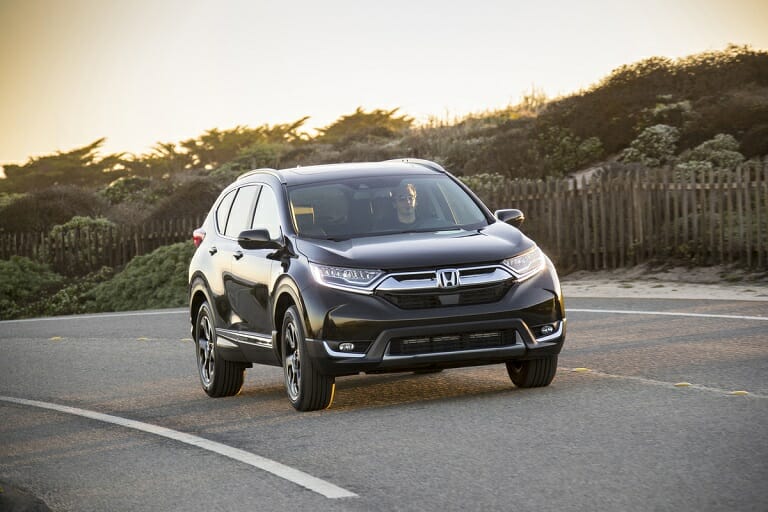For every Honda CR-V generation, we have ranked each model so you don’t pick the worst one.
Our ultimate guide will help you identify the top and bottom model years for each generation of Honda CR-V.
Using reliability surveys, consumer reviews, recall histories, and owner reviews, we’ve compiled a comprehensive guide that highlights each generation’s strengths and weaknesses.
In the world of Captionstime, tools and resources are your best friends. They simplify tasks, save time, and enhance your creativity. Imagine effortlessly generating captions that captivate your audience or analyzing data to refine your strategy. Let’s dive into these essential tools that can elevate your Captionstime experience.

Our guide covers everything you need to know about the Honda CR-V, from technological advancements to common problems.
Let’s get right to it by looking at the different generations of the Honda CR-V.
Honda CR-V Generations
A pioneer in the compact SUV market, the Honda CR-V made its debut in the 1990s. The combination of utility, efficiency, and reliability made it a popular choice.
In order to better understand the Honda CR-V’s generations, here is a breakdown from 2002 onwards:
| Generations | Years |
| 2nd generation (RD4-RD9) | 2002-2006 |
| 3rd generation (RE1-RE5, RE7) | 2007-2011 |
| 4th generation (RM1-RM4, RE5-RE6) | 2012-2016 |
| 5th generation (RW1-RW8, RT5-RT6) | 2017-2022 |
| 6th generation (RS) | 2023-Present |
The design, features, and technology of each generation are distinctly different. Potential buyers’ decision-making can be significantly influenced by their generation.
Honda CR-V Best, Neutral, and Worst Years
There are several factors to consider when ranking and categorizing the Honda CR-V model years. The following are included:
You’ll be able to see a comprehensive graph detailing the combined ratings from each source above in the near future.
To make an informed choice when considering a Honda CR-V, we have presented a table summarizing the best, neutral, and worst years.
| Generation | Best Years | Neutral Years | Worst Years |
| 2nd generation (RD4-RD9) | 2005 2006 | N/A | 2002 2003 2004 |
| 3rd generation (RE1-RE5, RE7) | 2009 | 20102011 | 2007 2008 |
| 4th generation (RM1-RM4, RE5-RE6) | 2013 2016 | 2012 | 2014 2015 |
| 5th generation (RW1-RW8, RT5-RT6) | 2022 | 20192020 | 2017 2018 2021 |
There were years when the Honda CR-V did not particularly shine, but there were no glaring issues either. Undecided buyers can rely on them because they offer a balanced performance.
It’s important to note that some factors can negatively impact a car’s rating, such as NHTSA recalls. The more complaints and recalls, the lower the reliability, and the lower the score.
We’ll now look at the best, neutral, and worst Honda CR-V years based on specifications, features, and issues.
Why Buy a Used CR-V?
Used Honda CR-Vs are an incredible value with Honda’s rock-solid reliability, but there are plenty of reasons to buy a new Honda CR-V.
Best & Worst Years for Honda CR-V 2nd Generation (2002-2006)
There were several design and technological changes to the Honda CR-V during its second generation, which ran from 2002 to 2006. Powertrain options were enhanced and the design was more rugged in this generation.

Certain model years were plagued by issues associated with these changes.
The Best Years: 2005, 2006
A number of improvements were made to the Honda CR-V between 2005 and 2006. Compared to earlier models, 2005 seemed to see a decrease in engine problems.
In addition to its comfort and space, the CR-V is also known for its reliability. These years stand out among the second generation of models due to the improvements made in 2005 and 2006.
The Worst Years: 2002, 2003, 2004
Among the problems with the 2002 model were problems with the airbags, the air conditioner, and some engine problems. “Black Death” was this year’s most common problem, in which the AC compressor failed and contaminated the entire system, costing nearly $1,600 to repair.
With a recall concerning shift cable linkage, the 2003 model continued the problems of the 2002 model. It is possible that excessive corrosion of the transmission cable linkage could prevent drivers from shifting SUVs equipped with automatic transmissions into park, resulting in an accident.
Certain 2002-2006 Honda CR-V models were recalled in 2019 due to concerns about passenger frontal airbag inflators degrading due to prolonged hot and humid conditions.
A higher number of recalls have also been issued for the Honda CR-V’s second generation than for its subsequent generations. Checking the VIN is highly recommended if you are considering a model from this generation.
Sanskrit, often hailed as the language of the gods, is renowned for its rich literary heritage and complex grammatical structure. One of the fundamental aspects of Sanskrit grammar is the concept of “Shabd Roop.” Understanding Shabd Roop is essential for anyone delving into the intricacies of Sanskrit language and literature.
Best & Worst Years for Honda CR-V 3rd Generation (2007-2011)
The third generation Honda CR-V, which was available from 2007 to 2011, introduced a more urban and sophisticated design. The interior space and fuel efficiency of this generation also improved.

The Best Year: 2009
Comparatively to its siblings from the same generation, the 2009 Honda CR-V was relatively problem-free. The vehicle has retained the comfort, reliability, and practicality of its predecessors.
Airbag and electrical complaints were not as prevalent in 2009 as they were in other years of this generation, making it a standout.
The Neutral Years: 2010, 2011
Although there were fewer major issues with 2010 and 2011 models than with 2007 and 2008 models, there were still some owners’ concerns. In most cases, these concerns were continuations of those from 2007 and 2008:
The Worst Years: 2007, 2008
In 2007, a high number of complaints marked the beginning of the third generation. Airbags and electrical issues with doors, locks, and linkages accounted for most complaints. Many owners have reported that their lock actuators failed, causing their doors to lock and unlock while driving.
Complaints about airbags continued into 2008 as a result of these problems. There have been reports of airbags not deploying. The inflators of certain Honda CR-Vs from 2007-2011 were improperly installed in 2019, as well.
There was an alarming problem with the third-generation CR-V’s acceleration. Often, drivers would press the brake, but their engines would rev up, causing them to accelerate unintentionally. Up to $5,000 in repairs could be required to resolve this dangerous situation.
There was also a problem with under-inflated airbags. Under-inflated airbags can cause occupants to collide with hard surfaces, possibly resulting in a concussion.
Best & Worst Years for Honda CR-V 4th Generation (2012-2016)
In its fourth generation, the Honda CR-V showed Honda’s efforts to modernize its beloved SUV from 2012 to 2016. There was a strong emphasis on safety and fuel efficiency in this generation of the CR-V as well as a refined design.

The Best Years: 2013, 2016
This year’s Honda CR-V is widely praised for its dependability and lack of mechanical problems. Its smooth drive and comfort, combined with new technologies and safety features, made it a favorite among many.
A number of the shortcomings of the 2015 model were corrected in the 2016 model, in contrast to those of its predecessor. There were significantly fewer complaints about engine-related problems.
The addition of safety features and improvements to the infotainment system also made it an attractive choice for consumers.
The Neutral Year: 2012
As the first model of the fourth generation, the 2012 CR-V set the stage for what was to come.
Even though it introduced the new aesthetics and features that would define this generation, it couldn’t quite match the performance and reliability of the 2013 and 2016 models.
As a result, it wasn’t plagued by the more severe problems that plagued 2014 and 2015.
The Worst Years: 2014, 2015
As with the previous generation, there were problems with the lock actuators in the 2014 model year. The VTC actuator also produces a noticeable grinding noise and new complaints have emerged regarding faulty tire pressure sensors. Owners disagreed over these concerns, even though they could be addressed.
Among the fourth generation, the 2015 CR-V stands out as one of the most problematic models. The most common issues involved engine-related problems, such as stalling and pronounced engine noises.
The vehicle shuddered while idling, which was particularly irritating. Some of these issues were resolved by updating the Powertrain Control Module (PCM) and installing a tailgate damper lift kit, according to Honda.
The soy-based wiring attracted rodents, causing damage to heaters, and causing rodent infestations.
Best & Worst Years for Honda CR-V 5th Generation (2017-2022)
The Honda CR-V fifth generation was launched in 2017 and offered a fresh take on Honda’s flagship SUV. The edgier design, modernized technology suite, and evolved performance dynamics demonstrate the brand’s intent to stay competitive in the SUV market.

The Best Years: 2022
With the 2022 Honda CR-V, the feedback and improvements from the earlier years of the fifth generation were consolidated.
The model of 2022 provides a perfect balance between reliability, performance, and technological integration while addressing past concerns.
Due to fewer reported issues and a favorable reception, it became a popular choice among SUV fans.
The Neutral Years: 2019, 2020
Honda continued improving its performance and addressing some of its predecessors’ concerns with the 2019 CR-V.
The model’s engine performance and safety measures improved, but it didn’t quite reach the same level of excellence as the later 2022 model.
With the 2020 Honda CR-V serving as a transitional model in the generation, it is important to strike a balance between functionality and aesthetics. In an effort to promote sustainable mobility, Honda introduced a hybrid variant.
The Worst Years: 2017, 2018, 2021
2017 Model: From the beginning, the 2017 CR-V faced numerous challenges, primarily with its electrical system, engine, and powertrain. Several owners expressed concerns about engine stalling, causing safety and reliability issues.
Furthermore, dashboard lights were unpredictable, which led to further dissatisfaction.
Continuing some of the problems from the 2017 model, the 2018 model introduces another significant issue: service brake problems. Several owners reported unexpected brake engagements, adding to safety concerns for this model year.
The 2021 CR-V had setbacks despite being later in the generation. The vehicle received a low rating of 1.9 out of 5 on VehicleHistory.com, primarily because of erratic brake engagement.
Honda CR-V Problems
Honda CRVs are generally reliable vehicles despite facing numerous challenges. However, they do have their issues, including comfortability concerns and equipment failures, just like any car. The following are some of the most common Honda CRV problems.
The following problems may occur with engines:
Problems with electricity:
The interior has the following problems:
Honda CR-V 2007 consumers have been dissatisfied with these issues. Maintaining Honda’s reputation requires addressing these concerns. Make sure you check Kelley Blue Book, consumer reports, and other reviews if you’re considering a Honda CR-V. These problems can be prevented or addressed with regular maintenance and prompt attention to warning lights, such as the “check engine light.”
Honda CR-V 6th Generation (2023-Present)
Honda’s 2023 CR-V continued its predecessor’s legacy while incorporating new technology. It featured Honda Sensing with superior lane-keeping and adaptive cruise control functions, as well as enhanced safety features.
Additionally, it featured a hybrid system that provided better fuel economy without sacrificing power. With a new interior design and a digital dashboard, the infotainment system offers updated connectivity features and a more spacious cabin.

Based on the previous year’s advancements, the 2024 model further refined its safety and technological features. In an urban environment, the advanced pedestrian detection system was particularly notable.
The 2024 CR-V also features the new e-AWD system, providing better traction and off-road capabilities. Redesigned grilles and sharper LED headlamps enhance the vehicle’s visual appeal, as well as the aesthetic tweaks.
Even though both models are relatively new, they demonstrate Honda’s commitment to reliability, innovation, and customer satisfaction. It will be possible to form a clearer picture of potential issues or notable highlights of these vehicles as more real-world data becomes available.
What is Honda CR-V Resale Value?
Based on a specified time period, the following chart depicts the average resale value of the Honda CR-V.
Knowing the resale trajectory of one of the market’s most popular SUVs can provide insight into its durability, demand, and overall perceived value.
Best & Worst Honda Civic Years | Years To Avoid
Best & Worst Honda Pilot Years | Years To Avoid
Best & Worst Honda Accord Years | Years To Avoid
Best & Worst Honda Odyssey Years | Years To Avoid
Honda Pilot Firing Order For Cylinder Numbers From 2002-2015
Best & Worst Honda Fit Years | Years To Avoid
Best & Worst Honda Ridgeline Years | Years To Avoid
FAQs
What year Honda CR-V is the most reliable?
Best used CR-V year: 2005-2006. Even 15 years after they arrived on New Fairfield roads, these SUVs still perform like a dream when properly maintained.
What is the best used Honda CR-V to buy?
Certified used Honda CR-V models made within the last five years are the best choice if you are looking for a used Honda CR-V. The best years are 2020, 2021, or 2022, however, other years after 2017 are also very good. Depending on your budget, you may want to try an EX or Touring trim.
Are old Honda CRVS good cars?
Second-generation Honda CR-Vs are an affordable alternative to first-generation vehicles. There are particularly strong reliability reviews for the 2005 and 2006 Honda CR-V models. Additionally, they are highly reliable, offer great fuel economy, and have strong engines.
What is Honda CR-V average Lifespan?
An average Honda CR-V’s lifespan is heavily influenced by its maintenance and usage patterns. The CRV has been designed to last over 200,000 kilometers, and with a little extra care, it could last over 400,000 kilometers, equivalent to over 20 years. This longevity can be achieved through regular oil and filter changes.
Which is the Most Reliable Engine in Honda CR-V?
A highly praised new engine is featured in the latest Honda CR-V generation, the 1.5L I4 turbo. Combined with a CVT, this engine produces 179 pounds per foot of torque and 190 horsepower for two more miles per gallon. Reliability and performance have been praised.
Conclusion
To make an informed buying decision, understand the history and issues of each model year in the Honda CR-V’s generational evolution.
What is the best generation of Honda CR-V in your opinion?
Let us know what you think in the comments below based on your own experience and insights.
